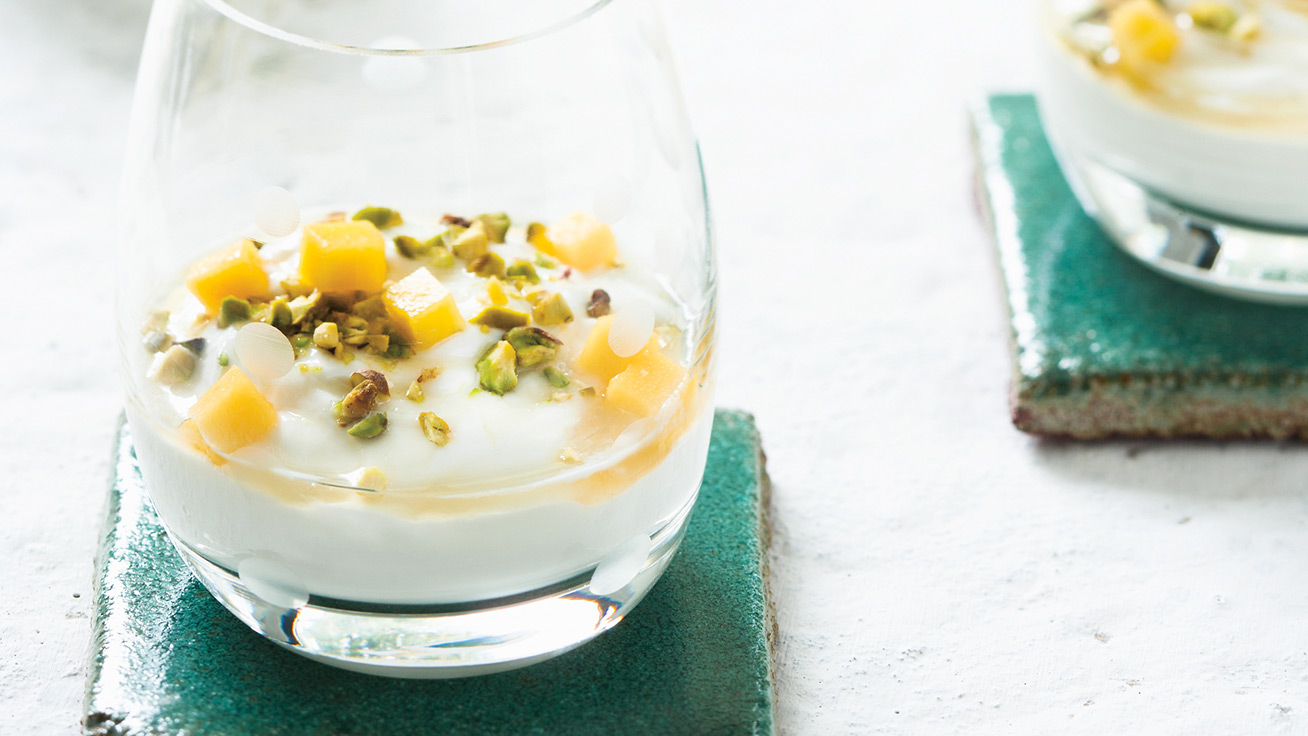It’s called labneh in Lebanon or yiaourti sakoulas in Greece. It’s part of the culinary heritage in most Middle Eastern countries, where it is eaten almost daily from breakfast through to dinner in a variety of traditional recipes.
What is greek yogurt?
It’s just ordinary yogurt that has been strained. Traditionally, the straining is done by filtering yogurt through a cheesecloth, washcloth or even pillowcase for several hours to remove whey. The resulting yogurt, also called yogurt cheese, has a thick and creamy texture.
The difference between ordinary yogurt and Greek yogurt
Thicker
One of the most amazing qualities of Greek yogurt is its thick, smooth and creamy texture. This is a result of how it is made, and not due to the presence of gelatin or other thickening agents, nor necessarily fat. Store-bought plain Greek yogurt usually contains only two or three ingredients: milk (whole, partly skimmed or skimmed, depending on the desired fat content), active bacterial cultures (to acidify milk and turn it into yogurt) and sometimes cream (for yogurt with a higher fat content). Greek yogurt with 0% fat content is just as thick and creamy as those with a higher cream content. This is why Greek yogurt is a great substitute for sour cream or cream cheese in dip, spread or even cheesecake recipes (see the recipe for Low-Fat Cheesecake)
More or less calcium
Oddly, the amount of calcium found in Greek yogurt differs widely from one brand to the next. A quick glance at the Nutrition Facts table reveals that some provide 15% of the recommended daily intake, while others fill 50%. Why such a big difference? The ingredients are identical. The secret lies in the manufacturing process.
Two methods are commonly used. The first is a filtration process that mimics the traditional technique, by removing whey from yogurt after it is made. Unfortunately, part of the calcium present in yogurt strains out with the whey, and this reduces the amount of calcium in the finished product. This manufacturing process makes Greek yogurt with 15% of the recommended daily intake, compared to 20% for the same amount of an ordinary yogurt.
The second manufacturing process differs from the traditional technique. It removes some of the water present in milk before the yogurt is made. Manufacturers who use this method produce Greek yogurt that contains more calcium than ordinary yogurt, up to 50% of the recommended daily intake per portion.
More expensive
The only downside to Greek yogurt is the cost: be prepared to pay more for it than ordinary yogurt. The price is justified by the larger amount of milk required to make it. Since a part of the volume is lost during the straining process, it takes three times more milk to make Greek yogurt than ordinary yogurt. Is the price worth it? That depends on your needs. Greek yogurt is an interesting option if you are looking for a healthier alternative to sour cream or cream cheese, or a nutritious, filling snack. Keep an eye out for sales or, why not, make it yourself!
Make it yourself
It is easy to make Greek yogurt yourself. Use the plain yogurt of your choice, preferably one containing no gelatin, as this will retain whey.
1. Line a colander with cheesecloth, a coffee filter or even two sheets of good quality paper towel, and pour the yogurt on it. Cover the colander with plastic wrap or a plate.
2. Position an empty bowl underneath and put it in the fridge. The yellow liquid draining out is whey. The longer you strain it, the thicker the yogurt will be.
3. When the yogurt reaches the desired consistency, remove it from the colander by lifting the cheesecloth, filter or paper towel. The yogurt will slide off practically on its own. It will keep up to one week in the fridge.
- 2 hours of straining: creamy consistency
- 6 hours of straining: same consistency as store-bought yogurt
- 12 hours of straining: thick consistency, similar to labneh
Labneh
Unlike Greek yogurt, labneh always has added salt and is part of almost every meal in Lebanon. It is traditionally served on a mezze (appetizer) plate, drizzled with extra-virgin olive oil and dried mint, accompanied by pita bread and olives. When it is strained even more, labneh becomes thick enough to be rolled into small balls, which are then covered in herbs and spices and stored in olive oil. Strained yogurt is also used to make the famous Greek tzatziki sauce, along with grated cucumber and garlic, which accompanies souvlaki and gyros. Strained yogurt is also served for breakfast or as a dessert, drizzled with honey and nuts.

